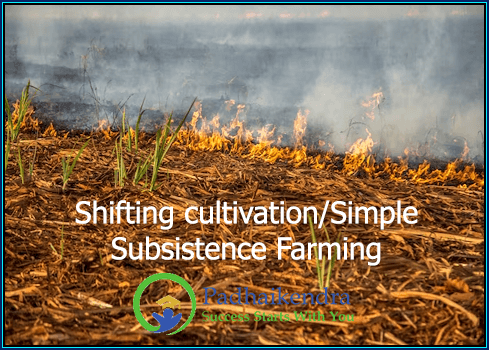Shifting cultivation, also known as slash-and-burn agriculture or swidden farming, is a type of subsistence farming practiced by some indigenous communities in tropical regions. It involves clearing a patch of land by cutting down and burning trees and vegetation, and then planting crops in the ash-enriched soil. After a few years, when the soil fertility declines, the farmer moves to a new patch of land and repeats the process.
This type of agriculture is usually practiced on a small scale and is sustainable when done in a way that allows the forest to regenerate before the land is cleared again. However, when done on a large scale or without proper management, it can lead to deforestation, soil erosion, and loss of biodiversity.
Shifting cultivation is typically practiced by communities that have a close relationship with the forest and rely on it for their livelihoods. It is often seen as a traditional way of life and a cultural practice that is important for maintaining community identity and values.
While shifting cultivation may provide subsistence for local communities, it is often criticized for being inefficient and not providing enough food to support growing populations. Additionally, it can contribute to climate change by releasing carbon stored in trees and vegetation into the atmosphere.
Overall, shifting cultivation is a complex and controversial practice that has both positive and negative impacts on the environment and on local communities. It is important to balance the needs of communities with the need for sustainable land use and conservation of forests and biodiversity.





